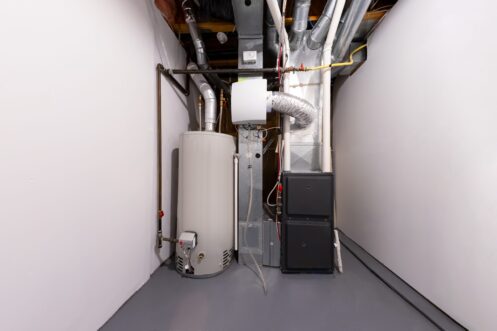
Heating systems are pivotal in maintaining home comfort, yet they face wear and inefficiencies over time. Recognizing signs that you need a heater replacement is crucial to maintaining a warm and safe living space. Various indicators hint at a failing heating system, from increased utility costs to strange noises and short cycling. Below are key signals that highlight when it’s time to consider replacing your heater.
1. Higher Utility Costs
Higher utility costs can signal the need for a heater replacement. An aging or inefficient heating system often consumes more energy to maintain desired temperatures, reflecting increased utility bills. Inefficient combustion, worn components, or decreased system performance cause excessive energy usage. A heater struggling to keep up with heating demands has trouble functioning efficiently, elevating costs. Regularly rising bills, especially without changes in usage habits, indicate the heater’s declining efficiency.
2. Older Heating System
Aging heating systems often exhibit signs of needing replacement. Older units, typically over 15 years old, endure wear and tear, leading to diminished performance and frequent breakdowns. Components degrade, impacting efficiency and reliability. Outdated technology in these systems falls short of modern energy standards, resulting in higher energy consumption and inefficiencies. Repairs become frequent and costly as parts become obsolete or more challenging to find.
3. Strange Noises
Strange noises from a heater, such as banging, rattling, or squealing, are potential issues that demand a replacement. Accumulated dirt or debris in older units causes rumbling or banging as the heater operates, while worn-out parts produce squealing or screeching sounds. These noises result from deteriorating components, such as belts, bearings, or motors, indicating the system’s declining efficiency.
Ignoring these sounds may lead to severe damage or complete breakdown. Newer heaters operate quietly due to advanced technology and superior construction. Hence, recognizing and addressing odd noises is important, prompting consideration for a replacement to ensure a safer, quieter, and more efficient heating system.
4. Yellow Burner Flame
A yellow burner flame in a gas-powered heater signals potential hazards, demanding a replacement. Usually, a gas heater flame burns blue, signifying efficient combustion. However, a yellow flame indicates incomplete burning, likely due to a gas or ventilation issue. This incomplete combustion releases carbon monoxide, a colorless, odorless, and potentially lethal gas. A yellow flame can result from blocked vents, dirty burners, or a malfunctioning gas mixture.
Carbon monoxide poses severe health risks, including nausea, headaches, or even fatalities. Ignoring this warning sign can be life-threatening. Promptly addressing a yellow burner flame by shutting off the heater, ventilating the area, and seeking professional assistance become imperative to avoid potential dangers. You should consider replacing your heater for safety reasons.
5. Several Repairs in a Short Time
A heater requiring constant fixes signifies underlying systemic issues or deteriorating components. Despite temporary resolutions, recurring breakdowns indicate a declining system unable to sustain functionality. Continuous repairs strain finances and disrupt comfort, highlighting the system’s unreliability. Additionally, the cumulative cost of multiple repairs often surpasses the expense of a new heater. Investing in a heater replacement becomes practical, ensuring a reliable, efficient, and cost-effective heating solution.
6. Constantly Adjusting the Thermostat
A functional heating system maintains consistent temperatures throughout a home. However, if frequent adjustments are needed to sustain warmth or combat uneven heating, it indicates underlying issues. Aging heaters lose efficiency, struggling to distribute heat or maintain desired temperatures evenly. Malfunctioning components, poor insulation, or an overworked system could cause inconsistent heating. Constantly tweaking the thermostat disrupts comfort and signals the system’s inadequacy.
7. Short Cycling
Short cycling, characterized by frequent on-off cycles of the heater, points to potential replacement needs. This occurs when the heater powers on, rapidly reaches the desired temperature, and shuts off prematurely, repeating the cycle. Causes may include an oversized system, thermostat issues, or malfunctioning components. Short cycling strains the heater, leading to increased wear and tear, heightened energy consumption, and inconsistent heating. It undermines efficiency and compromises the system’s longevity.
Are you noticing any of these warning signs with your heater? Don’t let an inefficient or malfunctioning system compromise your comfort and safety. Schedule an inspection with us at TS Heat & Air, and our professional technicians will help evaluate your heater and recommend a modern unit tailored to your home’s heating needs. We also offer heating, cooling, and air quality services to residents in Bethany & the OKC Metro area. Contact us today at TS Heat & Air to learn more about our services or schedule an appointment to experience our exceptional service.
